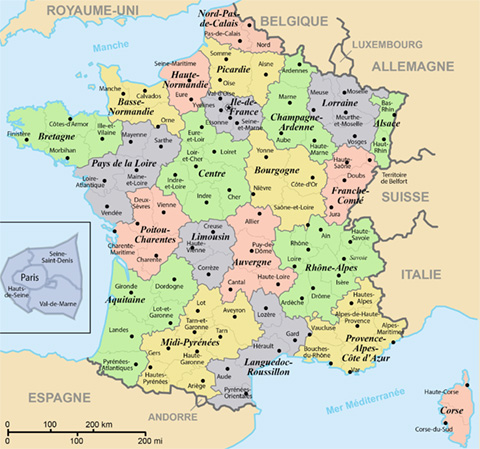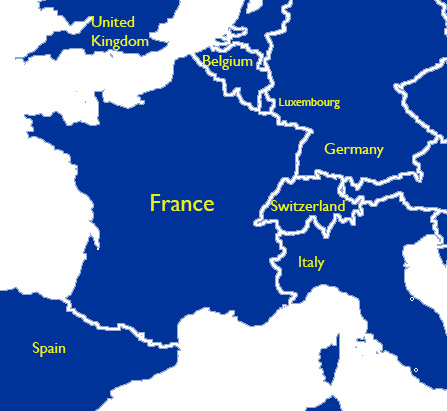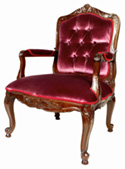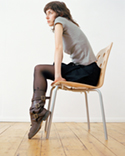Learn
France is divided into twenty-two (22) administrative regions. Each has its own history and character. These have been dictated by important historical events as well as its geography. In this unit, we will look at the physical features and natural resources that have shaped and continue to shape France's economy, transportation, housing, clothing, and much more.

France is a country with an abundance of natural waterways. It is possible to navigate from one end of the country to the other entirely by water and, when arriving at the coast, to continue one’s journey by way of the sea. Many important cities, once dependent on these waterways for transporting goods, owe their existence to the rivers and the bodies of water that surround the famous hexagon. Can you name the five primary riversSeine, Loire, Rhone, Rhine, Garonne of France?

France is a country of variety and contrast.
Surrounded by water on three sides, it enjoys over seven thousand square miles of coastline. To the north and southwest lie the fertile valleys that have made France the number one agricultural exporter in the European Union while the northeast, central, and extreme southern regions are distinguished by five major mountain ranges: Pyrénéss, Massif Central, Alpes, Jura, and Vosges. These afford the locals and tourists with therapeutic hot springs and a choice of activities including hiking, and skiing.

There are eight countries immediately bordering France: Spain, Andorra, Italy, Monaco (a principality), Switzerland, Germany, Luxembourg, and Belgium.
England and Morocco, though separated by water, are neighbors as well. This proximity to so many countries has had a major impact on France's language, cuisine, clothing, housing practice, and demographics.

In English, you may demonstrate possession in one of two ways:
| It's Mary's bed | noun + apostrophe + s |
| It's her bed. | possessive adjective + noun |
In French, you may demonstrate possession in one of two ways also:
| C'est le lit de Marie. | noun + de + name of the person |
| C'est son lit. | possessive adjective + noun |
Review the possessive adjectives below. Remember that the possessive adjective must agree in number and gender with the noun that it describes.
Possessive Adjectives
| English | masc. | fem. | plural | masc./fem. | plural | English |
| my / mine | mon | ma | mes | notre | nos | our / ours |
| your / yours | ton | ta | tes | votre | vos | your / yours |
| his / hers | son | sa | ses | leur | leurs | their / theirs |
Study the following examples. Note: If you have a singluar noun beginning with a vowel, you must use the masculine singluar form of the adjective.
| our armchair | notre fauteuil (m/s) |  |
| their chairs | leurs chaises (f/s) |  |
| her bookcase | son étagère (f/s) |  |
| my computers | my ordinateurs (m/p) |  |
 |
 |